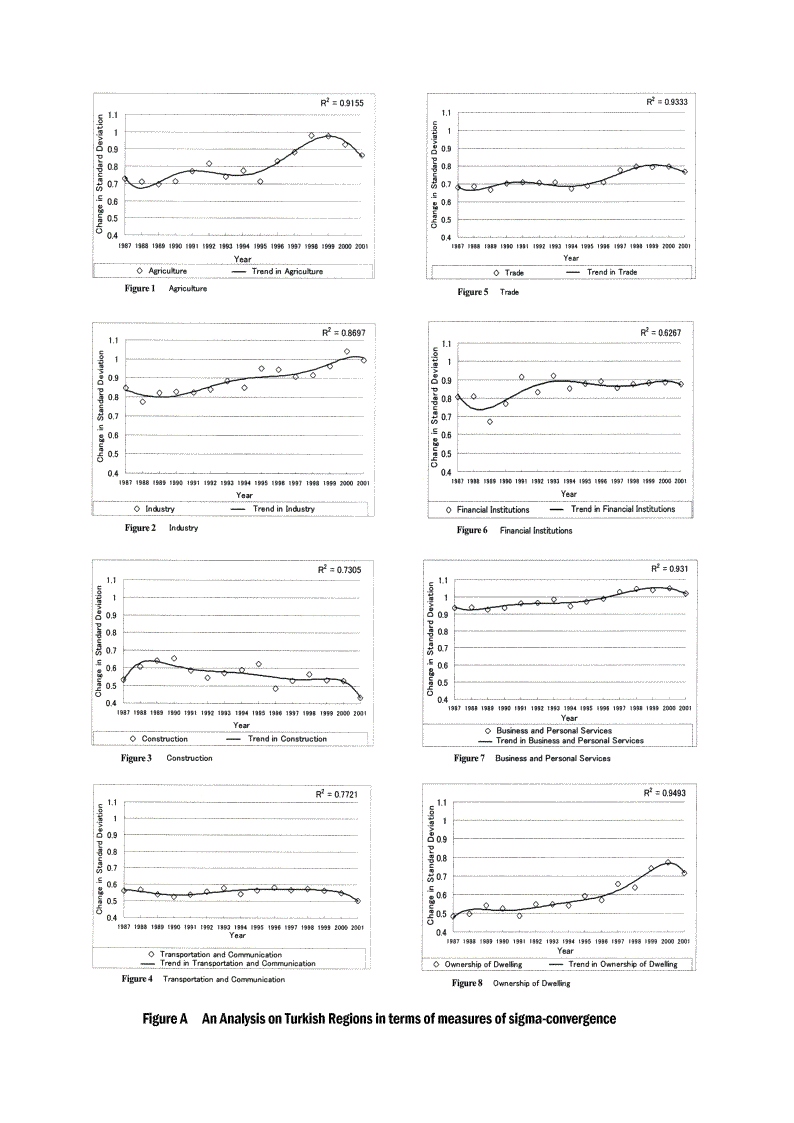Abstract
Regional development components are very important for Turkey in the process of membership to the European Union (EU). Hence, we analyzed regional tendencies in Turkey based on sectoral GDP per capita incomes of the regions in terms of EU type regionalization movement called as NUTS Level Regions (Nomenclature of Territorial Units for Statistics) for a more different research point from other studies. We also aimed to reach more applicable and realistic results for potential project opportunities in the regions than single and simple estimation and computation studies of regional inequalities. In this regard, the neoclassic growth model and its convergence theory is used to discuss as a development instrument. It is important to mention here that weak administration structures and wrong project implementations result in low regional homogeneity, productivity, and investments. In this point, analyzing sectoral developments of regions may assist developing and underdeveloped regions for their potential project areas to achieve higher levels of output per capita as compared with other regions' conditions.
In the per capita version of the Solow model, permanent population growth is incorporated. In this case, the steady state is defined in per capita terms while absolute quantities continue to grow. Therefore, some economic variables such as income, consumption, savings, capital stock and investment are expressed in per capita terms. In this context, it is very easy to mention that sectors in the regions will be another important application field of economic variables.
Therefore, the neoclassic growth model emphasizes the role of technological progress and labor productivity in maintaining a sustained long-run rate of growth by directly affecting the dynamics of the growth process. In steady state, therefore, the growth rate of output is equal to the rate of population growth and the rate of technological progress. This shows that output per worker will grow at the rate of technological progress in a state of balanced growth over the long run. Additionally, our study emphasizes that economic growth depends on administration skills and development project implementations, which refer to improved and proper organizations due to sectoral developments in the regions. Physical and technological progresses signify the areas of multidimensional regional development projects, which are utilized in the phase of regional convergence.
As the findings of the study for Turkish regions in sigma-convergence, the share of agricultural sector in total GDP per capita (in 1987 constant prices) had a decreasing tendency in all regions that resulted in divergence tendency till 1998 (Fig. 1). In industry, there was an increasing tendency in all regions in recent years and the most remarkable divergence was also observed (Fig. 2). As a remarkable finding, the most significant convergence tendency was observed in constructional GDP per capita (Fig. 3). In transportation and communication, a weak convergence tendency was observed (Fig. 4) by an increasing tendency in its sectoral share for all regions. Similarly, in trade, there was an increasing tendency in all regions, however, a remarkable divergence tendency was also observed in this sector (Fig. 5). For both financial institutions and business & personal services sectors, there were small waving tendencies that respectively resulted in a divergence tendency in financial institutions till 1993 (Fig. 6), and in business & personal services from 1987 (Fig. 7). Also, ownership of dwelling sector showed a strong divergence tendency (Fig. 8).
Consequently, for reaching the regional convergence targets and balancing regional development components, the main focus and effort should be on sectors, which have remarkable divergence tendencies such as agriculture, industry, trade, and ownership of dwelling sector with specific regional combined and co-operated projects among regions in Turkey.



